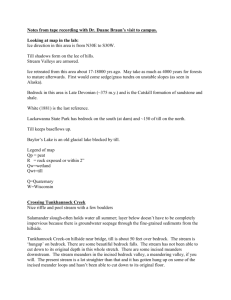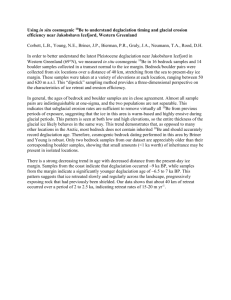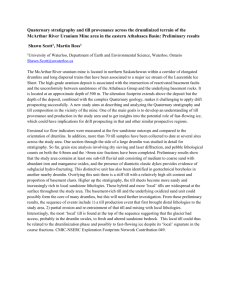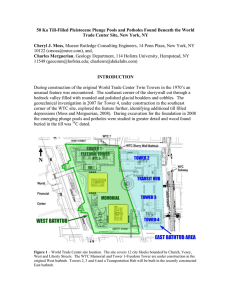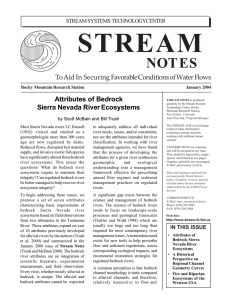Braun Notes.doc
advertisement
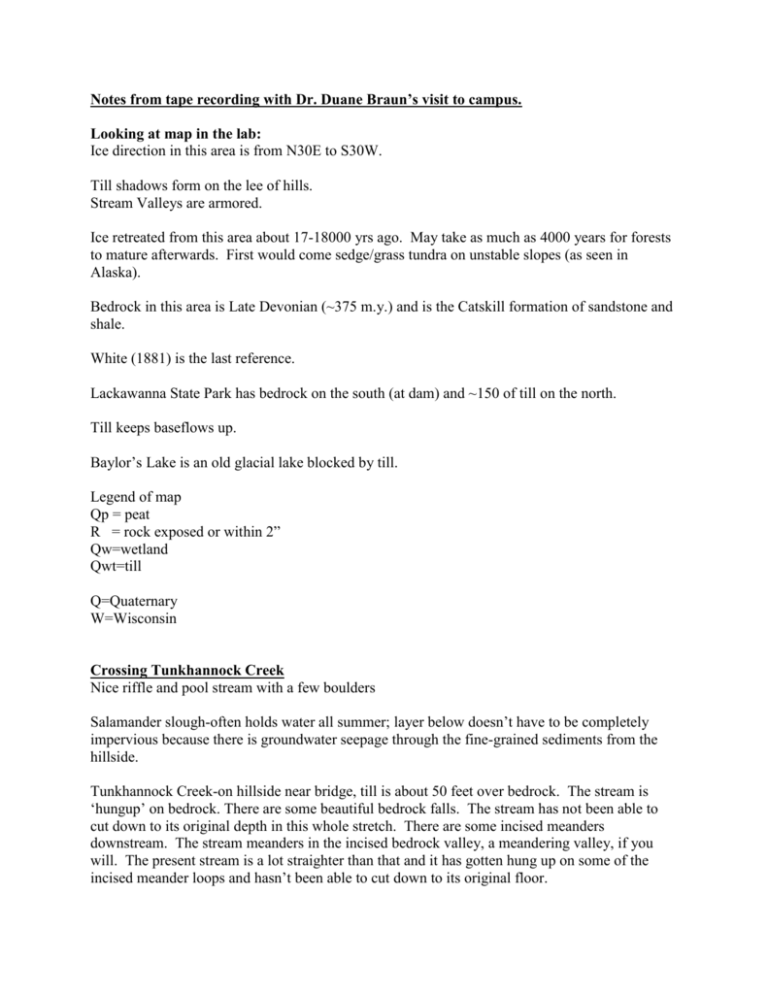
Notes from tape recording with Dr. Duane Braun’s visit to campus. Looking at map in the lab: Ice direction in this area is from N30E to S30W. Till shadows form on the lee of hills. Stream Valleys are armored. Ice retreated from this area about 17-18000 yrs ago. May take as much as 4000 years for forests to mature afterwards. First would come sedge/grass tundra on unstable slopes (as seen in Alaska). Bedrock in this area is Late Devonian (~375 m.y.) and is the Catskill formation of sandstone and shale. White (1881) is the last reference. Lackawanna State Park has bedrock on the south (at dam) and ~150 of till on the north. Till keeps baseflows up. Baylor’s Lake is an old glacial lake blocked by till. Legend of map Qp = peat R = rock exposed or within 2” Qw=wetland Qwt=till Q=Quaternary W=Wisconsin Crossing Tunkhannock Creek Nice riffle and pool stream with a few boulders Salamander slough-often holds water all summer; layer below doesn’t have to be completely impervious because there is groundwater seepage through the fine-grained sediments from the hillside. Tunkhannock Creek-on hillside near bridge, till is about 50 feet over bedrock. The stream is ‘hungup’ on bedrock. There are some beautiful bedrock falls. The stream has not been able to cut down to its original depth in this whole stretch. There are some incised meanders downstream. The stream meanders in the incised bedrock valley, a meandering valley, if you will. The present stream is a lot straighter than that and it has gotten hung up on some of the incised meander loops and hasn’t been able to cut down to its original floor. First gully up the trail, at first wooden bridge: Colluvium is visible; relates to periglacial environment. Frozen in winter, gradually thawing in warmer season, this layer ‘flowed’ downhill (“gelifluction”?). Now, the slope is stabilized, covered with vegetation, no longer moves as it did. This area had a warm-based glacier, melting at the bottom and releasing debris. Lodgement till is this debris being plastered to the bedrock by the full weight of the glacier. The boulders provide the stream with ‘self-armoring’ as they move downslope and prevent the stream from being able to cut back further. This gully isn’t cut very deep . . . the next one over is, but it has a much bigger drainage area. This area would look like a miniature grand canyon with its stepped appearance if it hadn’t been glaciated. This would be due to the alternation of sandstone and shale layers. The hummocky landscape suggests till (in the absence of the stepped appearance.) There probably was about 3000 feet of ice in this area (based on profiles of existing ice sheets and estimates of isostatic rebound after removal of the ice in the area of the Great Lakes). We’ve probably had about 100 feet of rebound in this area. Mantle material oozes out under the weight of the ice. When it’s gone, it oozes back in. Kind of like a waterbed (actually a sillyputty bed), but on a slower basis. Headed toward rock outcrops by sewage plant. The stonewalls tell us something. Notice that there are some rounded ones in with the tabular ones. The rounded ones tell us that there is till. If they are only tabular, probably bedrock close to the surface. Ice flow in this area is form N30E to S30W. This can be deflected by local topography, as has been done locally by Elk Mountain. The basal ice went around the mountain, as indicated by striations that were deflected about 30 degrees at its base. At the summit, the flow was in the normally expected direction.

